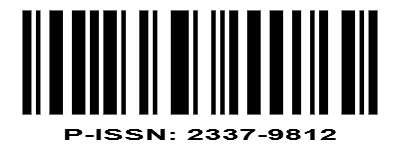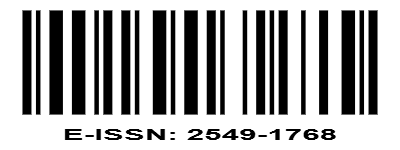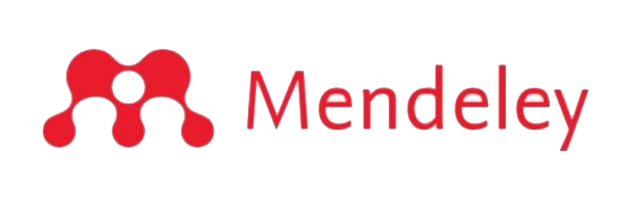THE EFFECT OF THE QUANTUM LEARNING MODEL ASSISTED WITH VIDEO ON STUDENTS' COGNITIVE LEARNING OUTCOMES IN SMP NEGERI 5, KUPANG
DOI:
https://doi.org/10.22373/biotik.v9i2.8343Keywords:
Quantum Learning Model, Video Media, Cognitive Learning OutcomesAbstract
This study aims to determine the effect of the video-assisted quantum learning model on the cognitive learning outcomes of students at SMP Negeri 5 Kupang City on the subject of Biology with the topic of additives and addictive substances. The research method used is quasi-experimental research, with a posttest-only control design. The research population was all students of class VIII with a total of 398 people, with the research sample consisting of 2 classes namely class VIII as the experimental class and class VIIIH as the control class totaling 30 students. Data collection techniques using learning outcomes tests with instruments in the form of multiple-choice questions and essays. Learning outcomes data were analyzed using SPPS version 22-assisted t-test. Based on the results of the hypothesis test, the t-count value was 8.424 with a significance of 0.000 <0.05, indicating a significant effect on the implementation of the quantum learning model on students' cognitive learning outcomes. In the quantum learning process, the learning atmosphere is comfortable and fun, students are actively involved during the learning process, with the help of video media aiming to sharpen students' memories of learning materials and make students enthusiastic about following lessons, as well as being responsible for completing tasks given by the teacher, dare to argue By making conclusions, the use of video media helps the learning process run smoothly to obtain satisfactory results. The results of the study can be concluded that there is a significant effect of the use of video-assisted quantum learning models on students' cognitive learning outcomes.
Downloads
References
DAFTAR PUSTAKA
Ahmad dan Joko. 2009. Model
Belajar Mengajar.
Bandung: Pustaka Setia.
Anderson, L.W. & Krathwohl,
D.R. 2001. A Taxonomy for
Learning Teaching and
Assesing: A Revision of
Bloom’s Taxonomy of
Edication Objectives. New
York: Addison Wesley
Longman.
Bafadal, Ibrahim. 2005.
Pengelolaan Perpustakaan
sekolah. Jakarta: Bumi
Aksara.
DePorter, Bobbi & Hernacki,
Mike. 2000. Quantum
Learning Membiasakan
Belajar Nyaman dan
Menyenangkan.
Bandung:Kaifa.
Dewi, K., Suardika, R., & Abadi, S. 2013. Pengaruh Model Pembelajaran Quantum Learning Berbantuan Media Video Konvensional terhadap Hasil Belajar IPA Siswa Kelas VIII-5 SMP Negeri 4 Denpasar Tahun Ajaran 2012/2013. Jurusan Pendidikan Fisika., Universitas Pendidikan Ganesha.
Junaedi, A., T.A Pribadi & L. Herlina. 2012. Pembelajaran Tandur Berbasis TIK pada Materi Pengelolaan Lingkungan. Unnes Jurnal of Biology Education.
Riyana, Cheepy. 2007. Pedoman
Pengembangan Media
Video. Jakarta: P3AI UPI.
Rusman. 2012. Model-Model
Pembelajaran:Mengembang
kan Profesionalisme Guru.
Jakarta: PT. Grafindo
Perkasa.
Sudjana, Nana. 2010. Penilaian
Hasil Proses Belajar
Mengajar. Bandung:
PT.Ramaja Rosdakarya.
Sugiyono. 2009. Metode
Penelitian Tindakan
Pendekatan Kuantitatif,
Kualitatif. Bandung:
Alfabeta.
Trianto. 2009. Model-model
Pembelajaran Inovatif
Berorientasi
Konstruktivistik.
Downloads
Additional Files
Published
Issue
Section
License
Authors who publish with BIOTIK: Jurnal Ilmiah Biologi Teknologi dan Kependidikan agree to the following terms:
- Authors retain copyright and grant the journal right of first publication with the work simultaneously licensed under a Creative Commons Attribution License that allows others to share the work with an acknowledgement of the work's authorship and initial publication in this journal.
- Authors are able to enter into separate, additional contractual arrangements for the non-exclusive distribution of the journal's published version of the work (e.g., post it to an institutional repository or publish it in a book), with an acknowledgement of its initial publication in this journal.
- Authors are permitted and encouraged to post their work online (e.g., in institutional repositories or on their website) prior to and during the submission process, as it can lead to productive exchanges, as well as earlier and greater citation of published work.











